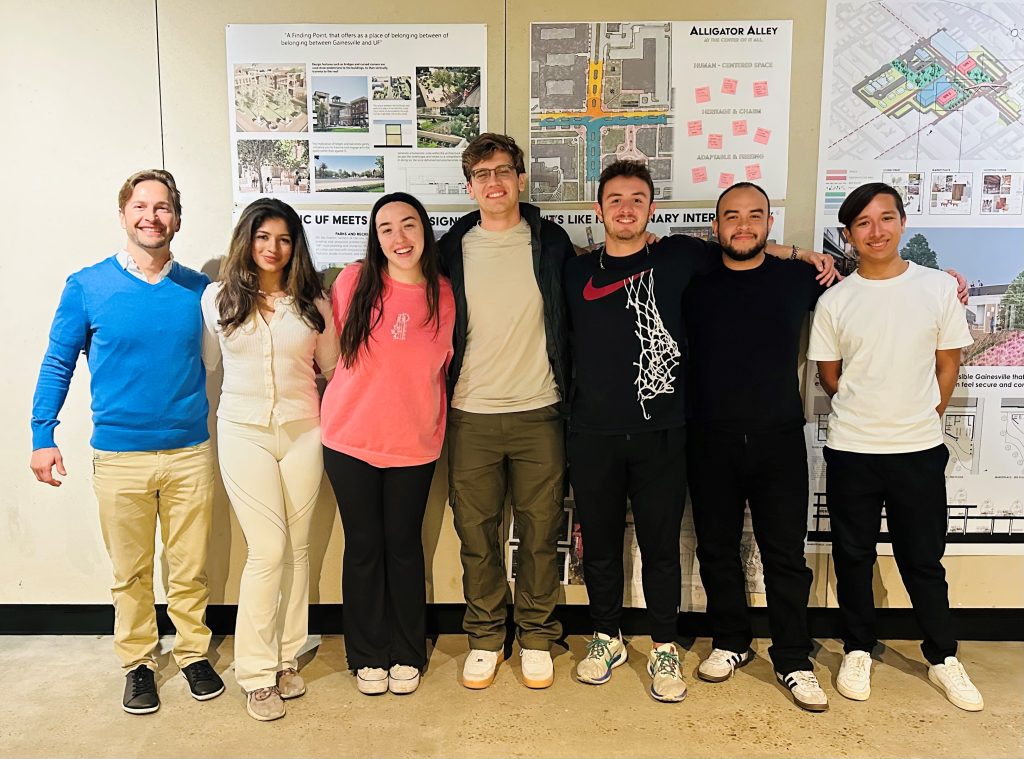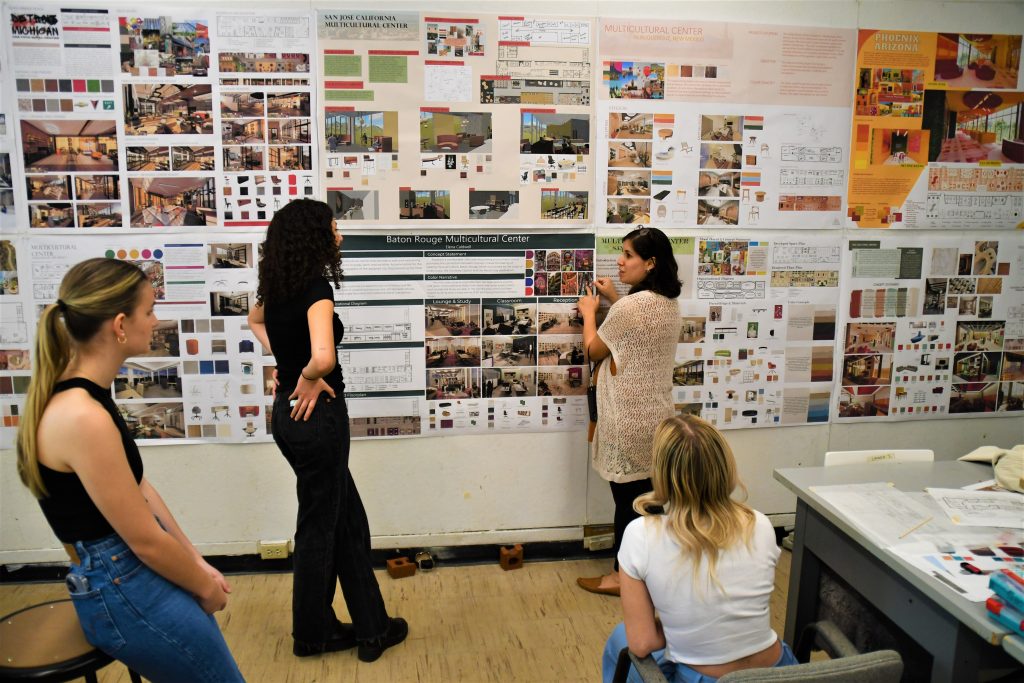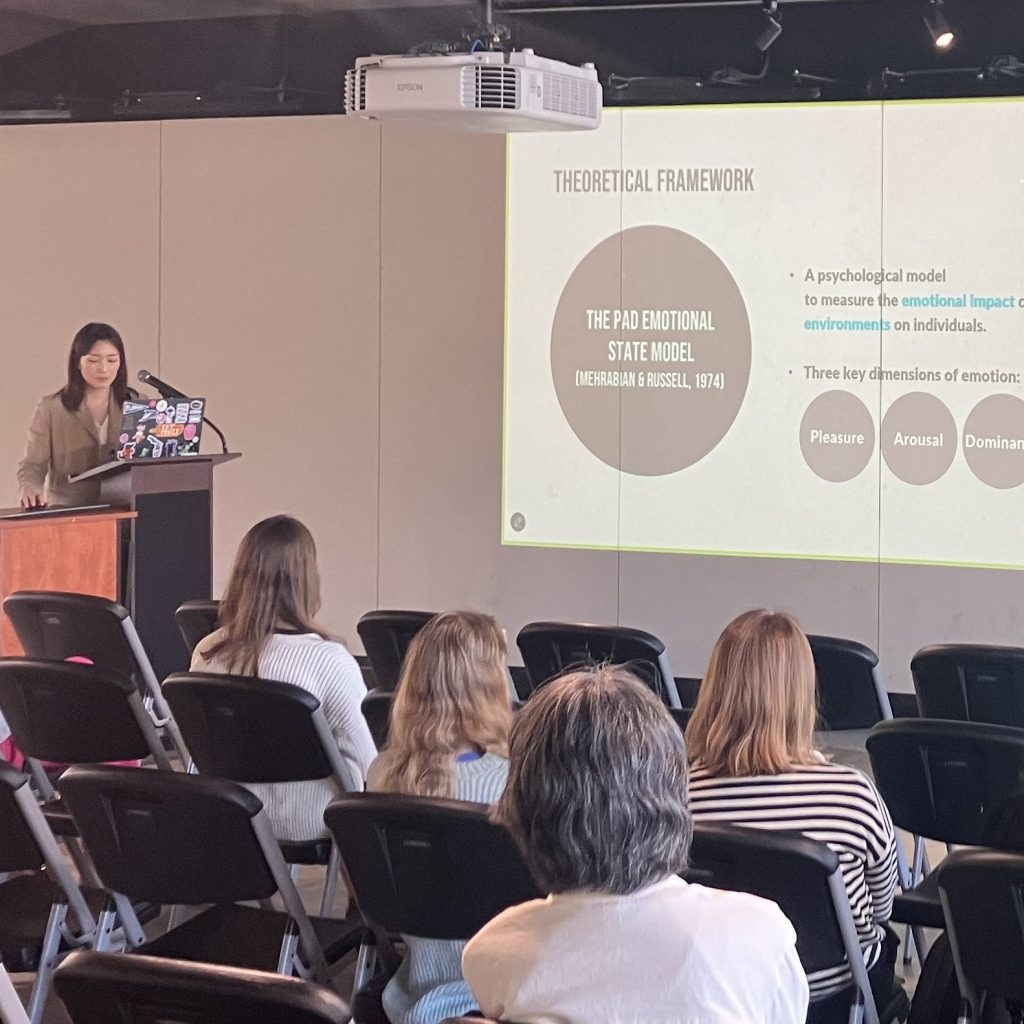Department of Interior Design
At the University of Florida, Interior Design students and faculty cultivate a culture of shared excellence. Guided by a distinguished faculty, students participate in design projects across Florida and around the globe. Our commitment to collaborative learning fosters a strong esprit de corps, where teamwork drives creative thinking and innovation.
Students at all levels work closely with faculty, and upper-division juniors and seniors actively mentor lower-division students. Our graduates go on to become exceptional designers, educators, and professionals in the field. Staying attuned to the evolving profession, we regularly collaborate with leading design firms and benefit from a network of accomplished alumni who remain actively engaged with the program—helping us stay at the forefront of industry advancements.
The Department of Interior Design is deeply committed to advancing the discipline. We pursue research that reflects the realities of practice and contributes meaningfully to the profession’s body of knowledge. Initiatives like the SAMPL project explore critical topics such as material use in design, sustainable practices, wellness-centered design, and emerging media innovations.
We are also proud to be among the few graduate programs in the United States producing doctoral students prepared to lead the future of design practice and education.
Interior Design at UF
Whether you are pursuing a Bachelor’s, Master’s, or Ph.D., we offer a program tailored to your goals in Interior Design. Our program is housed within the College of Design, Construction, and Planning—the only Interior Design program in Florida that shares a college with Architecture, Landscape Architecture, Historic Preservation, Sustainability in the Built Environment, Urban and Regional Planning, and Construction Management. This multidisciplinary setting fosters rich collaboration and innovation. Students benefit from close mentorship from dedicated faculty, access to cutting-edge research and opportunities to engage with top firms and industry leaders.
Bachelor of Design (BDES)
Our Interior Design undergraduate program is a first professional degree that prepares students for practice in the field. Accredited by the Council for Interior Design Accreditation (CIDA) since 1974, it was among the first programs to receive this recognition and has maintained continuous accreditation ever since. The program requires 120 credit hours and is typically completed in four years. Roughly half our students enter as Interior Design majors in their first year, while the other half join through the college’s GDC transfer program or transfer from other majors within the university.
Master of Interior Design (MID)
We are proud to be one of the nation’s leading institutions for graduate education in Interior Design, committed to shaping the next generation of practitioners, educators, and researchers. Our MID program offers two distinct tracks:
Eligible students in our undergraduate program can also complete the MID with just one additional year of study through our 4 + 1 option.
Ph.D. in Design, Construction and Planning
For those seeking advanced scholarship, we offer a Ph.D. with a concentration in Interior Design. This research-intensive program emphasizes diverse methodologies and empowers students to tackle critical challenges in the built environment through empirical inquiry.
Our Degree Programs
What is Interior Design?
Interior Design shapes the environments where we live, work, learn, eat, shop, and heal.
Interior Design is







